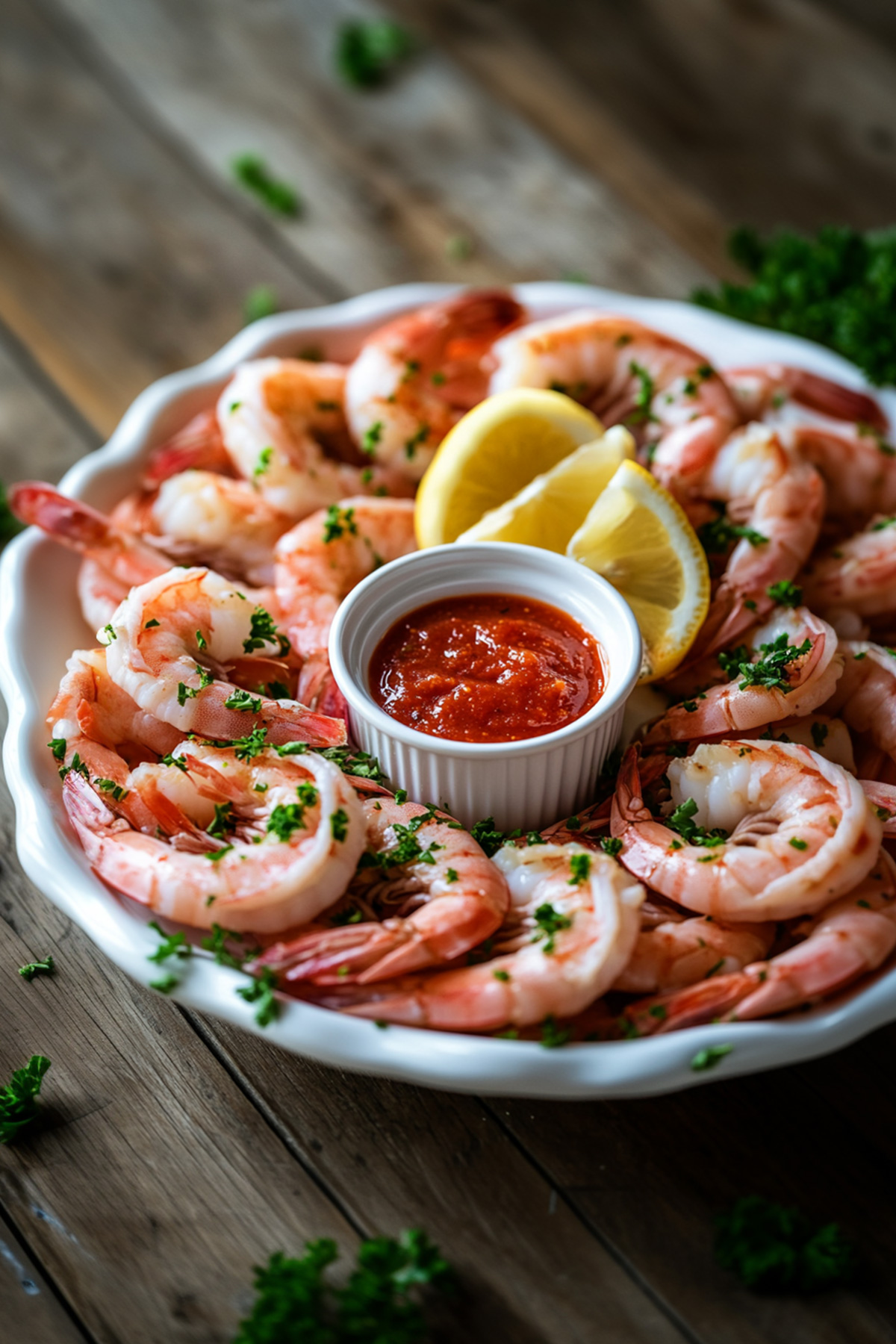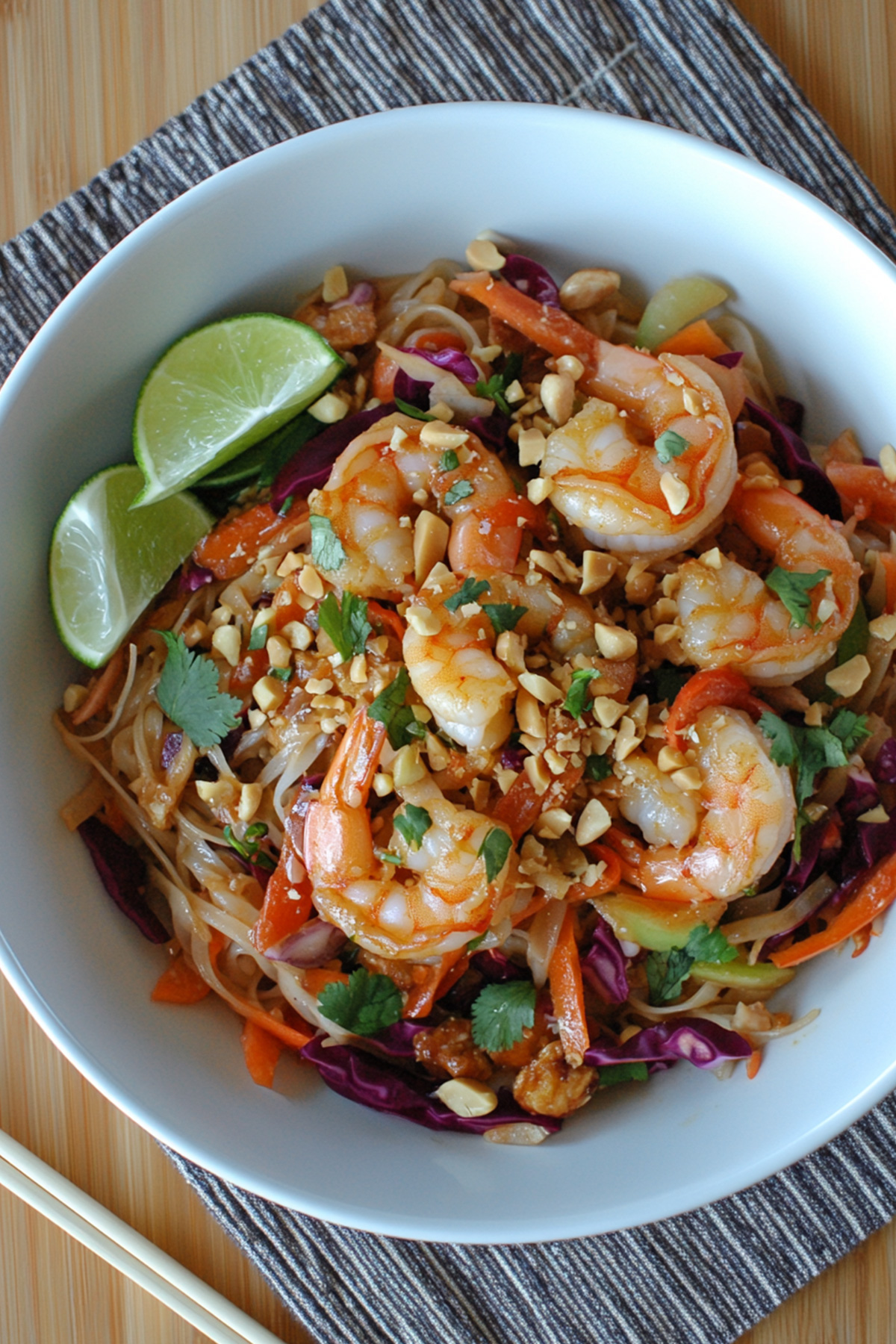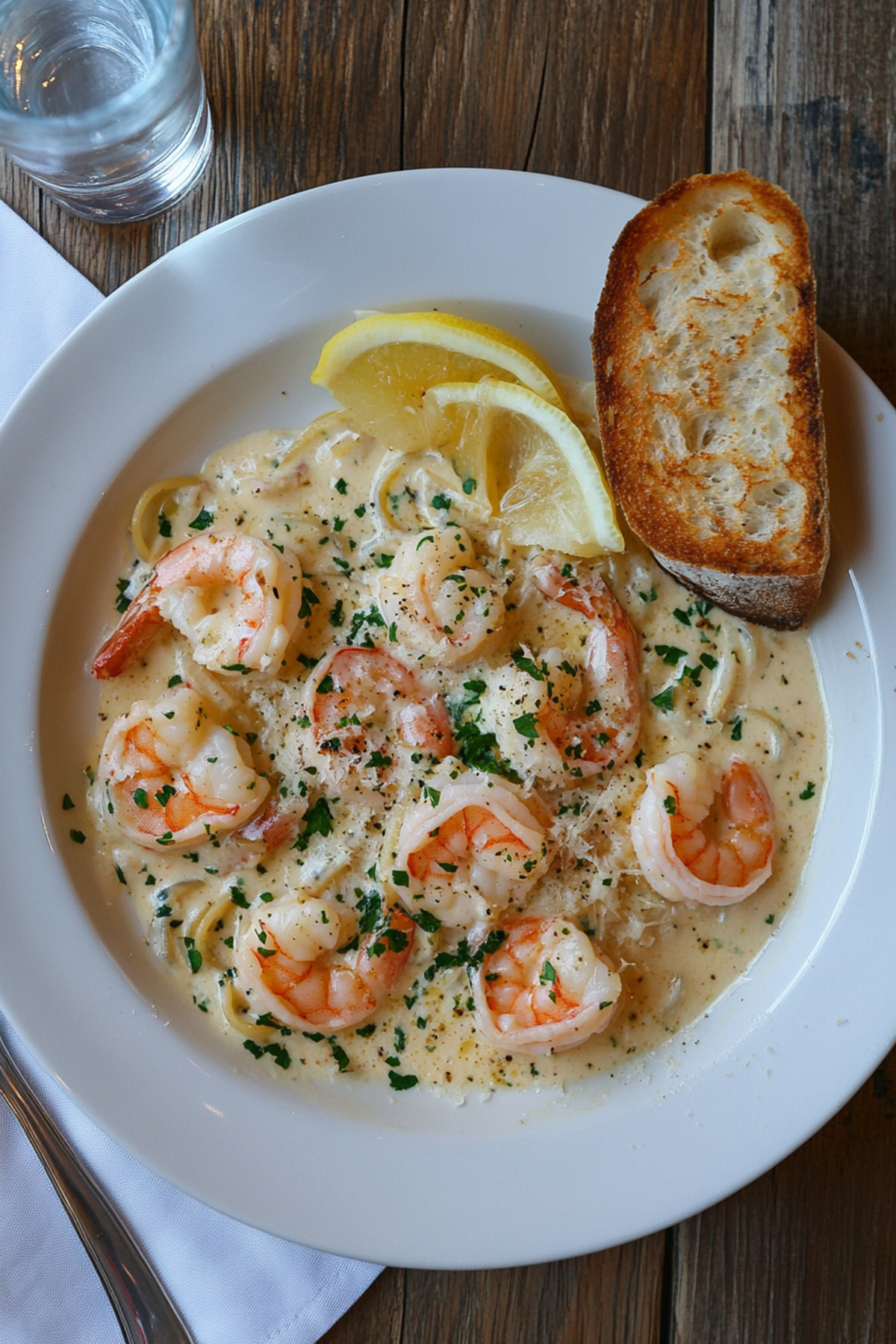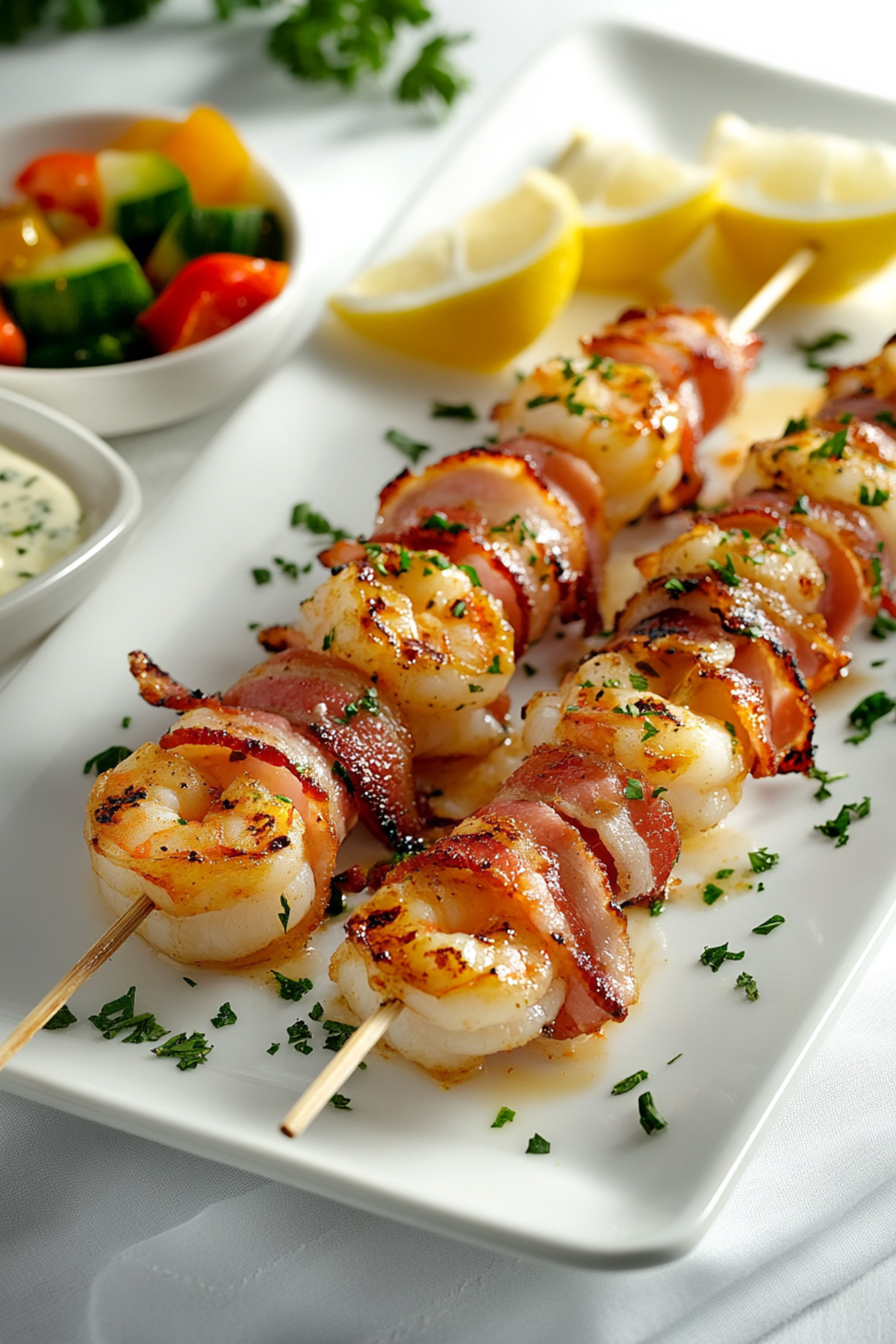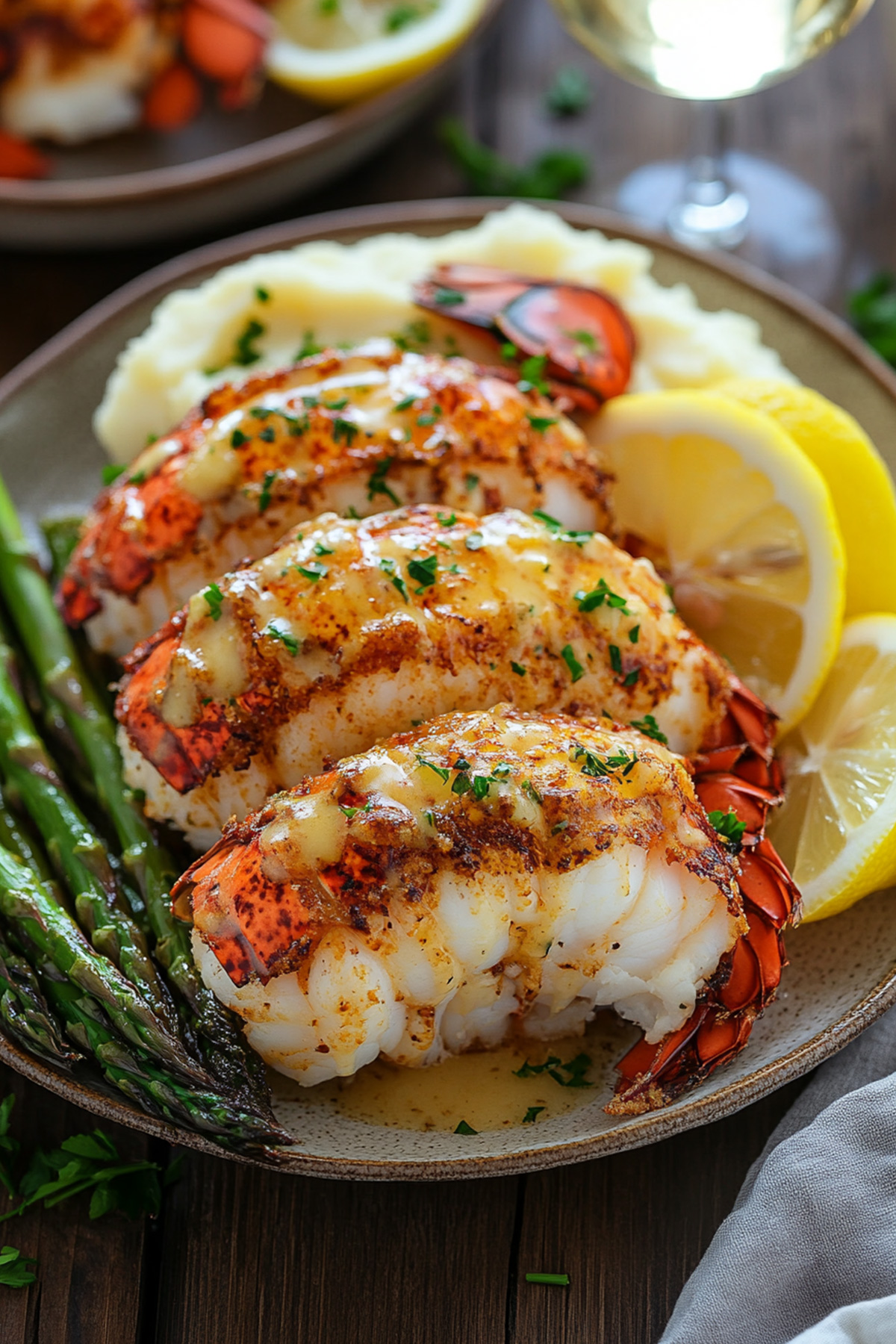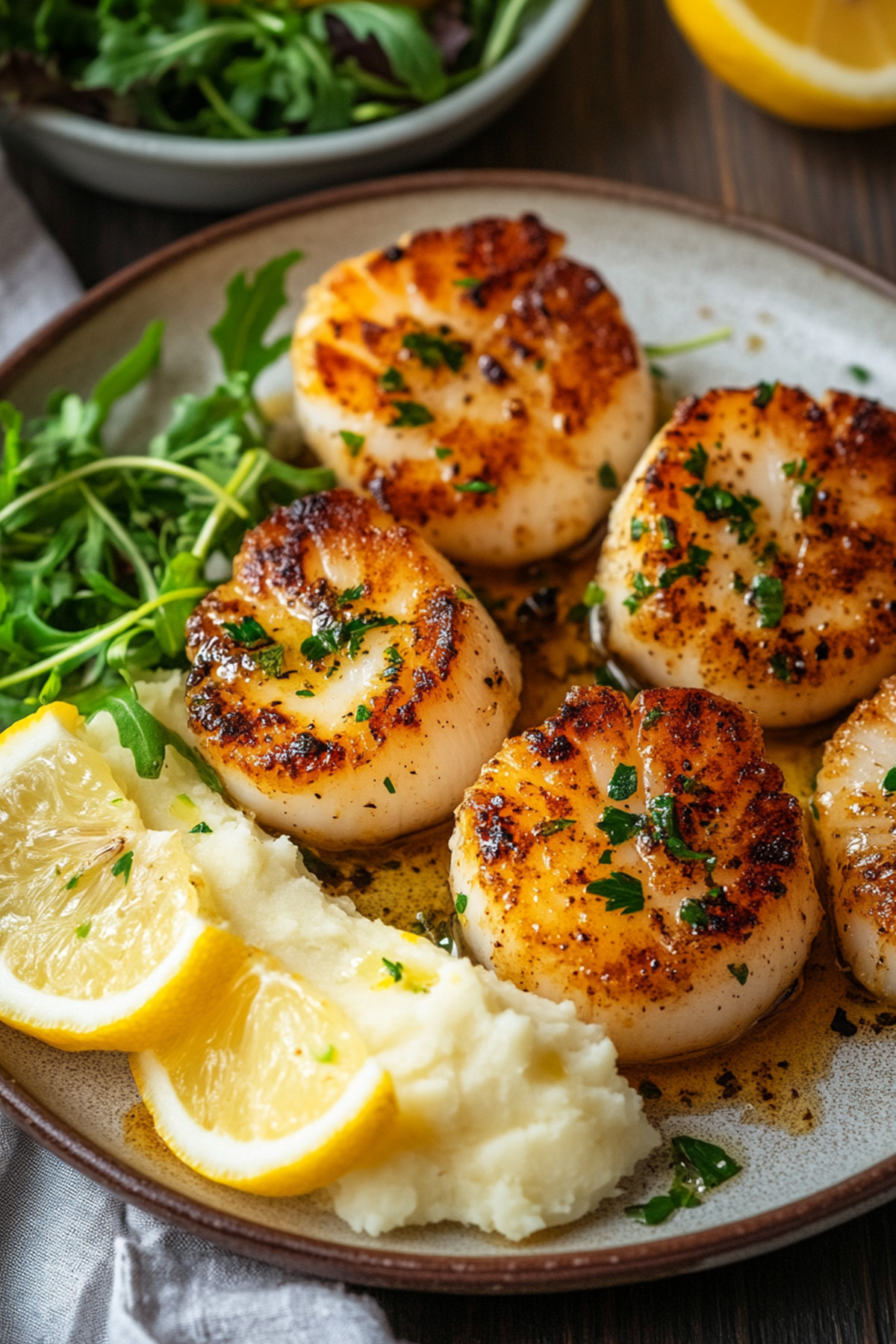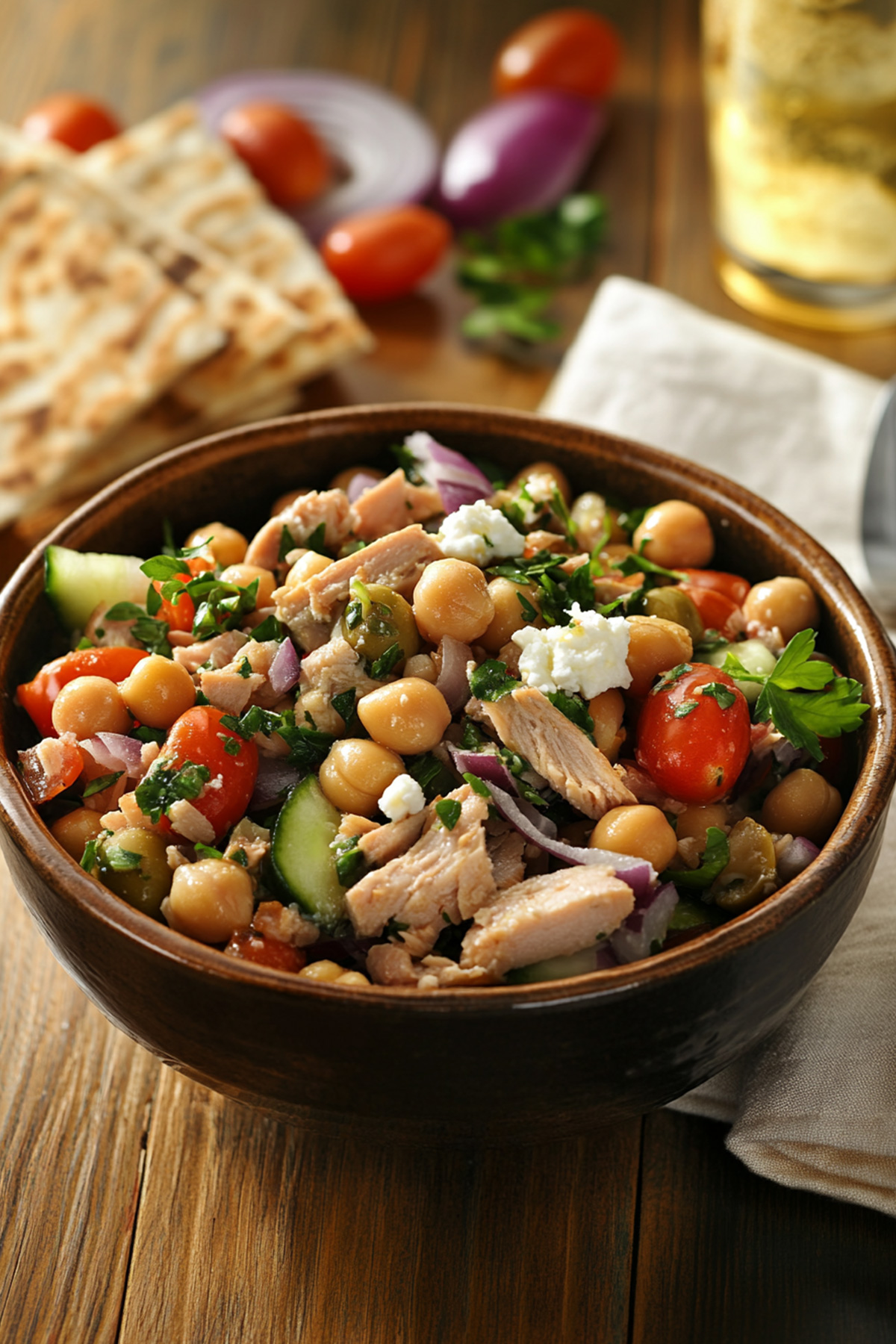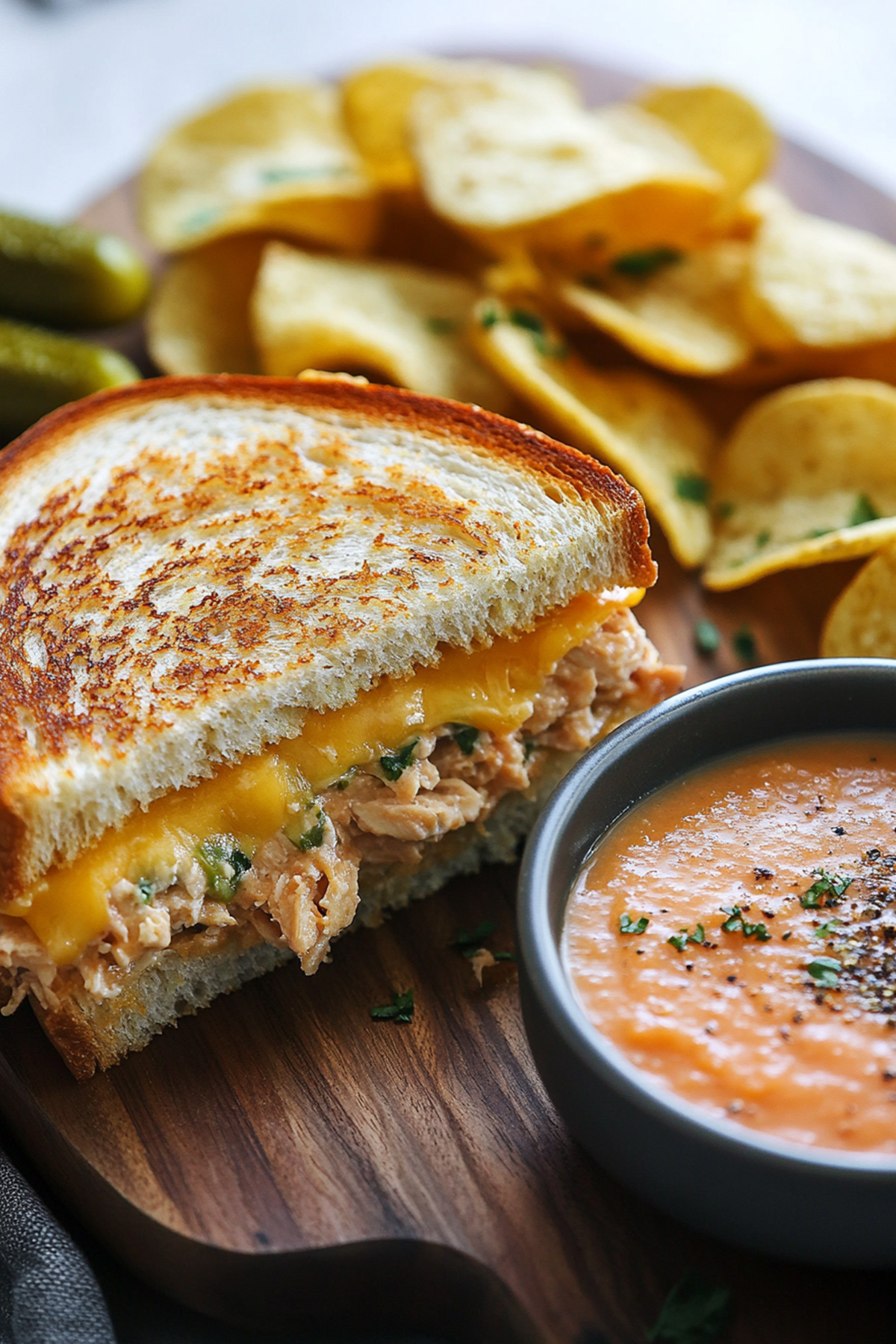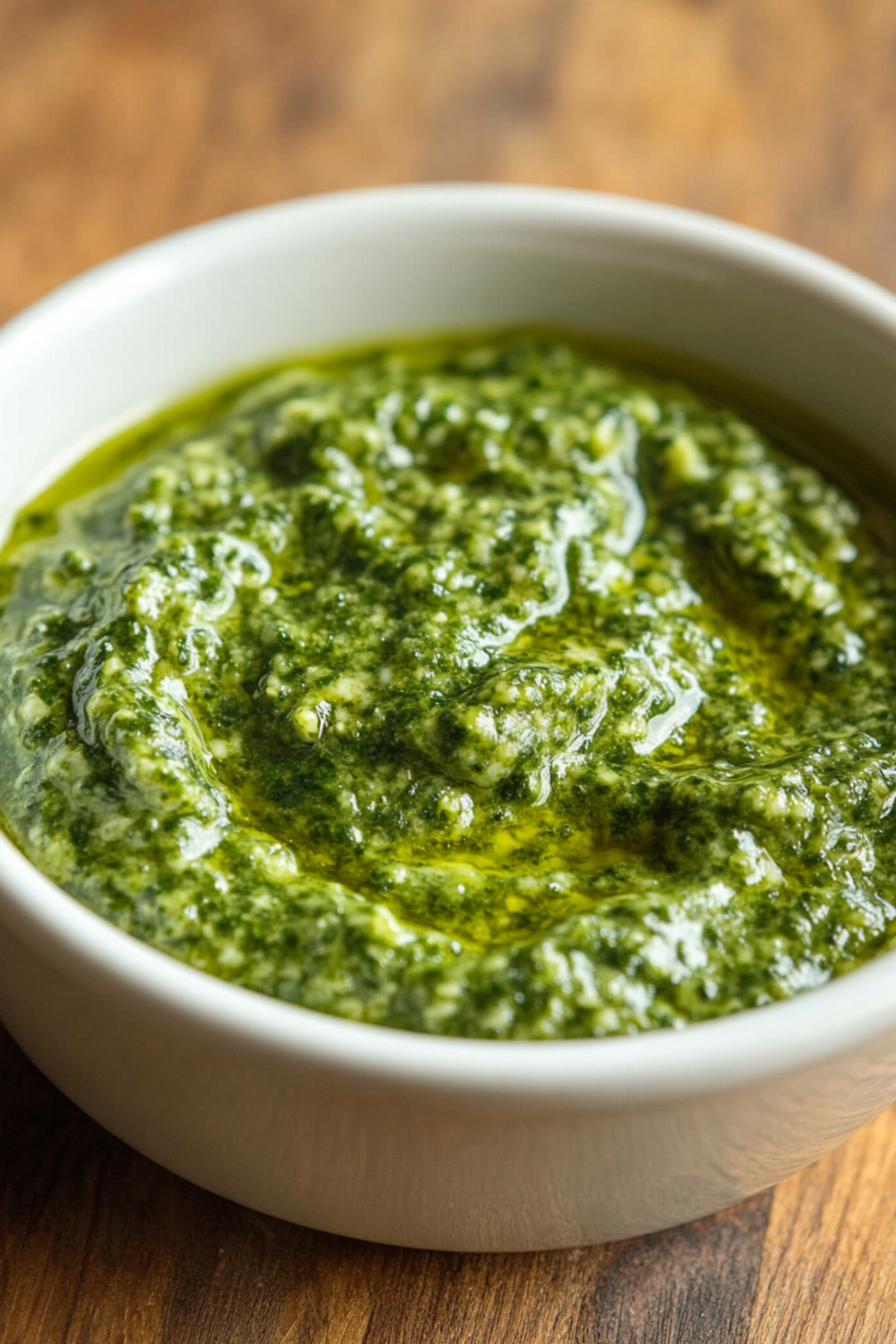Disclosure: As an Amazon Associate and participant in other affiliate programs, we earn from qualifying purchases. We only recommend products we believe will provide value to our readers.
A restaurant-quality steamed shrimp recipe doesn’t require hours in the kitchen or professional cooking skills.
In fact, you can prepare perfectly steamed shrimp in just 15 minutes, making it an ideal choice for both quick weeknight dinners and impressive entertaining.
While many people worry about how to steam shrimp properly, the process is surprisingly straightforward. The key lies in a few professional techniques: using large 16-20 count shrimp, keeping the shells on to retain moisture, and seasoning with Old Bay (about 2 teaspoons per pound).
Additionally, a simple brine solution can enhance the juiciness of your shrimp before cooking.
In this guide, you’ll learn the exact steps to create tender, flavorful steamed shrimp that reaches the perfect internal temperature of 145 degrees Fahrenheit.
We’ll also cover essential tips for achieving restaurant-worthy results, from proper preparation to ideal serving suggestions with cocktail sauce, lemon, or melted butter.
Table of Contents
Essential Equipment for Perfect Steamed Shrimp
Preparing restaurant-style steamed shrimp starts with having the right equipment in your kitchen. A quality steamer setup forms the foundation of this cooking method.
The most basic setup requires a large pot with a tight-fitting lid. Your pot should be deep enough to hold both water and a steaming rack while leaving space for the steam to circulate. A 6-8 quart pot works perfectly for most home cooking needs.
A steaming rack or basket sits above the water level, holding your shrimp during cooking. Choose a stainless steel basket that fits snugly in your pot. The rack should have small holes or a mesh pattern to allow steam to pass through while keeping the shrimp secure.
Here’s the essential equipment list for steaming shrimp:
- Large pot (6-8 quart capacity)
- Stainless steel steaming rack or basket
- Tight-fitting lid
- Heat-resistant tongs
- Kitchen thermometer
- Large bowl for ice bath
- Colander for draining
A reliable kitchen thermometer helps monitor both water temperature and shrimp doneness. Specifically, an instant-read digital thermometer gives you precise readings to ensure your shrimp reach the safe internal temperature.
Heat-resistant tongs provide safe handling of the steaming rack and help you check shrimp during cooking. Moreover, they allow you to remove shrimp quickly once they reach the perfect doneness.
For cooling your shrimp after cooking, you’ll need a large bowl suitable for an ice bath. Furthermore, a colander helps drain the shrimp efficiently and prevents them from becoming waterlogged.
Consider investing in a dedicated seafood steamer pot if you plan to steam shrimp regularly. These specialized pots come with built-in racks and often include helpful features like marked water levels and steam vents.
Keep your equipment clean and well-maintained to ensure the best results. Primarily, focus on removing any mineral deposits that might build up on your steaming rack, as these can affect the steam flow and potentially impact the flavor of your shrimp.
Read also: Dragon Sushi Roll Recipe
How to Clean and Prepare Shrimp Before Steaming
Proper shrimp preparation sets the foundation for an excellent steamed shrimp recipe. The cleaning process, though straightforward, requires attention to detail and careful handling to preserve the shrimp’s delicate texture.
Start by examining your raw shrimp for quality. Fresh shrimp should have a mild ocean scent and firm, translucent flesh. Avoid shrimp with black spots, strong fishy odors, or slimy texture.
Here’s the step-by-step process to clean your shrimp:
- Rinse shrimp under cold running water
- Remove shells by peeling from head to tail, leaving the tail on if desired
- Make a shallow cut along the back with a small knife
- Remove the dark vein running along the spine
- Rinse again thoroughly to remove any remaining debris
- Pat dry with paper towels
Shell-on vs. Shell-off Steaming Keeping the shells on primarily helps retain moisture and flavor. Consequently, many chefs recommend leaving shells intact during steaming. However, removing shells beforehand makes eating easier and allows seasonings to penetrate directly into the flesh.
Deveining Technique The dark line along a shrimp’s back is its digestive tract. Properly removing it improves both appearance and taste. Use a sharp paring knife to make a shallow cut, then lift out the vein with the knife tip or your fingers.
Size Selection Choose shrimp sized appropriately for your dish. Large shrimp (16-20 count per pound) work best for steaming as they’re less likely to overcook. Meanwhile, medium shrimp can cook too quickly and become tough.
Quality Checks Beyond basic cleaning, inspect each shrimp for:
- Broken or damaged shells (if cooking shell-on)
- Discoloration
- Proper deveining
- Complete removal of legs and small shell pieces
Pre-steaming Preparation After cleaning, place shrimp in a colander and refrigerate until ready to steam. This step ensures excess moisture drains away, leading to better texture in the final dish.
You may also like: Fried Fish and Shrimp Recipe
Remember to handle raw shrimp with clean utensils and wash your hands thoroughly after preparation. Certainly, maintaining proper food safety practices prevents cross-contamination and ensures a safe dining experience.
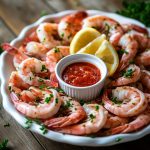
Steamed Shrimp Recipe
- Total Time: 15 minutes
- Yield: 4 servings 1x
- Diet: Gluten Free
Description
Creating perfectly steamed shrimp requires precise timing and careful attention to seasoning. This recipe delivers tender, flavorful shrimp that’s ideal for both casual dinners and special occasions.
This classic steamed shrimp recipe combines the robust flavors of Old Bay seasoning with a gentle cooking method that preserves the shrimp’s natural sweetness. The recipe uses a combination of water and vinegar or beer as the steaming liquid, creating an aromatic base that infuses the shrimp with delicate flavor.
Ingredients
- 1 pound large shrimp (16–20 count), shell-on and deveined
- 1/2 cup apple cider vinegar or beer
- 1/2 cup water
- 2 tablespoons Old Bay seasoning
- 1 lemon, sliced
- Optional: parsley for garnish
Instructions
- Mix the water, vinegar, and Old Bay seasoning in a large pot. Bring the mixture to a boil over medium heat.
- Once boiling, reduce the heat to maintain a steady simmer. Place your prepared shrimp in the steamer basket.
- Position the steamer basket in the pot, ensuring it doesn’t touch the water. Cover with a tight-fitting lid.
- Steam the shrimp for 4-6 minutes, depending on their size. At the halfway point, remove the lid and gently toss the shrimp for even cooking.
- Watch for the shrimp to turn pink and form a “C” shape – this indicates they’re properly cooked. Avoid cooking until they curl into an “O” shape, as this means they’re overcooked.
- Remove the steamer basket immediately when done and transfer shrimp to a serving platter.
Notes
- For the juiciest results, brine your shrimp in ice water and salt for one hour before cooking.
- The shells can be left on during cooking to preserve moisture and enhance flavor.
- Cooking time varies based on shrimp size – larger shrimp need closer to 6 minutes.
- Frozen shrimp can be used, but ensure they’re thoroughly thawed and patted dry.
- Prep Time: 5 minutes
- Cook Time: 10 minutes
- Category: Seafood
- Method: Steaming
- Cuisine: American
Primarily serve these steamed shrimp with cocktail sauce and lemon wedges. Subsequently, you can store any leftovers in an airtight container in the refrigerator for up to three days.
Perfect Side Dishes for Steamed Shrimp
Side dishes can make or break your steamed shrimp meal. Selecting the right accompaniments enhances both the presentation and dining experience of your seafood feast.
Fresh Vegetable Options pair naturally with steamed shrimp. Grilled asparagus spears add a smoky element, particularly when finished with a light drizzle of olive oil and sea salt. Roasted Brussels sprouts or green beans complement the sweetness of the shrimp without overpowering its delicate flavor.
Starchy sides provide satisfying substance to your meal. A classic corn on the cob brings sweetness and texture, especially when brushed with butter and sprinkled with Old Bay seasoning.
Baked potatoes, either regular or sweet, offer a hearty foundation that balances the lightness of steamed shrimp.
Your choice of grains can elevate the entire dining experience. Consider these popular options:
- Garlic butter rice pilaf
- Quinoa with herbs
- Couscous with roasted vegetables
- Wild rice blend
- Orzo pasta salad
Light salads bring freshness and crunch to your plate. A crisp coleslaw dressed with vinegar-based dressing cuts through the richness of buttered shrimp. Mixed green salads featuring cucumber, cherry tomatoes, and light citrus dressing offer a refreshing contrast.
Bread Selections deserve special attention as they’re perfect for soaking up flavorful juices. Crusty French bread, warm dinner rolls, or garlic bread all serve this purpose admirably. For a Southern twist, cornbread provides both texture and taste that perfectly matches steamed shrimp.
Sauces and condiments play an essential role in completing your meal. Beyond traditional cocktail sauce, consider preparing a lemony aioli or herb-infused butter sauce. A tangy remoulade offers a classic New Orleans touch that enhances the shrimp’s natural flavors.
For casual gatherings, corn and potato salads make excellent additions. These classic picnic sides work particularly well when serving chilled steamed shrimp at outdoor events or summer parties.
Grilled vegetables offer a smoky counterpoint to steamed shrimp. Zucchini, bell peppers, and eggplant slices, lightly seasoned with olive oil and herbs, provide both color and complementary flavors to your plate.
Rice and Pasta Options deserve consideration for their ability to absorb flavors. Angel hair pasta tossed with olive oil and garlic or coconut rice provides an excellent base for your steamed shrimp. Additionally, risotto made with seafood stock creates an elegant foundation for your meal.
For health-conscious diners, consider serving your steamed shrimp over a bed of cauliflower rice or alongside roasted vegetable medleys. These lighter options maintain the meal’s nutritional profile while adding variety and color to your plate.
Health Benefits of Steamed Shrimp
Steamed shrimp stands out as a nutritional powerhouse among seafood options. This cooking method preserves essential nutrients while keeping the calorie content low, making it an excellent choice for health-conscious diners.
Protein Power and Muscle Health Primarily, steamed shrimp delivers high-quality protein with all essential amino acids your body needs. A 3-ounce serving provides about 20 grams of protein, supporting muscle maintenance and growth.
Notably, this protein comes with minimal fat content, making steamed shrimp an ideal choice for fitness enthusiasts and those watching their calorie intake.
Essential Nutrients Your body benefits from several key nutrients found in steamed shrimp:
- Selenium for immune system support
- Vitamin B12 for nerve function
- Zinc for wound healing
- Iodine for thyroid health
- Iron for blood health
- Phosphorus for bone strength
Heart Health Benefits Steamed shrimp contains omega-3 fatty acids, essential for cardiovascular health. Coupled with its low saturated fat content, this cooking method helps maintain healthy cholesterol levels. The presence of astaxanthin, a powerful antioxidant, provides additional protection against heart disease.
Weight Management Advantages Essentially, steamed shrimp offers a satisfying meal option without excess calories. A 3-ounce portion contains roughly 84 calories, making it an excellent protein source for weight management plans. The protein content helps maintain satiety, reducing the likelihood of overeating between meals.
Brain Function Support The combination of omega-3 fatty acids and vitamin B12 in steamed shrimp supports cognitive function. Regular consumption may help maintain mental clarity and support memory function. Analogous to other seafood options, shrimp provides docosahexaenoic acid (DHA), crucial for brain health.
Antioxidant Properties Steamed shrimp contains selenium, a mineral with powerful antioxidant properties. This nutrient helps protect cells from damage and supports overall immune system function. Furthermore, the cooking method preserves these beneficial compounds better than high-heat cooking techniques.
Bone and Joint Health The calcium and phosphorus content in steamed shrimp contributes to bone strength. Additionally, the anti-inflammatory properties of omega-3 fatty acids may help reduce joint pain and stiffness. Regular consumption can support overall skeletal health as part of a balanced diet.
Skin Health Benefits The zinc content in steamed shrimp supports skin repair and maintenance. Meanwhile, the antioxidants help protect skin cells from environmental damage. The protein content also aids in collagen production, supporting skin elasticity and strength.
Thyroid Function The iodine content in steamed shrimp supports proper thyroid function. This mineral plays a crucial role in hormone production and metabolism regulation. Including steamed shrimp in your diet can help maintain optimal thyroid health.
Immune System Support The combination of zinc, selenium, and protein in steamed shrimp strengthens immune system function. These nutrients work together to support the body’s natural defense mechanisms. The gentle steaming process preserves these immune-boosting properties effectively.
References:
– WebMD
– Healthline
Remember that steaming preserves more nutrients compared to frying or grilling, maximizing the health benefits of this versatile seafood option. The absence of added fats during cooking maintains the natural nutritional profile while enhancing the shrimp’s inherent flavors.
Nutritional Information
Understanding the precise nutritional composition of steamed shrimp helps make informed dietary choices. A detailed breakdown reveals the exact nutrients you receive from this lean protein source.
A standard 3-ounce (85-gram) serving of steamed shrimp provides these key nutritional values:
| Nutrient | Amount | % Daily Value |
|---|---|---|
| Calories | 84 | 4% |
| Protein | 20g | 40% |
| Total Fat | 1.2g | 2% |
| Saturated Fat | 0.3g | 2% |
| Cholesterol | 165mg | 55% |
| Sodium | 805mg | 35% |
| Carbohydrates | 0g | 0% |
| Iron | 2.6mg | 14% |
| Calcium | 52mg | 4% |
| Potassium | 220mg | 6% |
Beyond these basic macronutrients, steamed shrimp delivers significant amounts of trace minerals. Accordingly, a single serving contains 30 micrograms of selenium, meeting 55% of your daily requirements. Primarily, this cooking method preserves the natural mineral content better than other preparation techniques.
The vitamin content remains stable through the steaming process. Each serving provides:
- Vitamin B12: 1.3 micrograms (54% DV)
- Vitamin D: 120 IU (30% DV)
- Niacin: 2.1mg (13% DV)
Regarding portion control, six large steamed shrimp typically constitute one serving. Nevertheless, serving sizes may vary based on the shrimp’s count size.
Generally, larger shrimp (16-20 count) require fewer pieces per serving compared to smaller varieties.
The caloric efficiency of steamed shrimp makes it an excellent protein source. Considering that each gram of protein contains 4 calories, the protein-to-calorie ratio demonstrates remarkable nutritional density.
Furthermore, the minimal fat content contributes to its status as a lean protein option.
Sodium levels can vary based on seasoning choices. Undoubtedly, using less Old Bay seasoning or other spice blends reduces the sodium content significantly. Similarly, rinsing steamed shrimp before consumption can help lower sodium levels without compromising taste.
The cholesterol content deserves attention, yet research indicates dietary cholesterol has less impact on blood cholesterol than previously thought.
Accordingly, most healthy adults can enjoy steamed shrimp as part of a balanced diet without concern.
Mineral absorption rates remain high with steamed preparation. The gentle cooking process preserves bioavailability, ensuring your body can effectively utilize nutrients like zinc and iron. Undeniably, this makes steamed shrimp an efficient source of essential minerals.
For those tracking macronutrients, steamed shrimp fits well into various dietary patterns. The absence of carbohydrates makes it suitable for ketogenic and low-carb diets. Simultaneously, the high protein content supports muscle maintenance and growth during calorie-restricted eating plans.
Micronutrient density varies slightly by shrimp size and species. Nonetheless, wild-caught varieties typically offer higher levels of omega-3 fatty acids compared to farm-raised options. The cooking method preserves these beneficial fats effectively.
Understanding serving sizes helps maintain portion control. One pound of raw shrimp typically yields about four 3-ounce servings after cooking. Accordingly, this makes meal planning and nutritional tracking straightforward.
The protein quality in steamed shrimp ranks exceptionally high on the biological value scale. This measurement indicates how efficiently your body can utilize the protein source. Fundamentally, shrimp protein contains all essential amino acids in optimal ratios for human nutrition.
References:
– Eat This Much
– WebMD
Conclusion
Steamed shrimp stands out as a perfect combination of convenience and nutrition. This cooking method preserves the natural flavors while delivering maximum nutritional benefits through a surprisingly simple preparation process.
Armed with the right equipment and techniques, you’ll create restaurant-worthy steamed shrimp at home within minutes.
The versatility of this dish shines through its numerous serving options, whether paired with fresh vegetables, grains, or classic sides like cocktail sauce and lemon wedges.
Beyond taste, steamed shrimp offers remarkable health advantages.
The high protein content, essential nutrients, and minimal calories make it an excellent choice for health-conscious diners and fitness enthusiasts alike.
Start with high-quality shrimp, maintain proper cooking temperatures, and watch your timing carefully.
These simple steps will help you master this cooking technique, bringing a nutritious and delicious seafood option to your dinner table.

